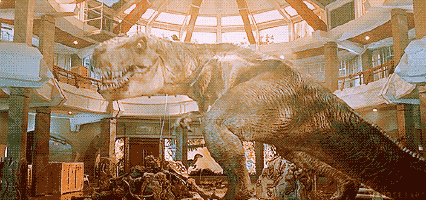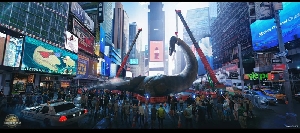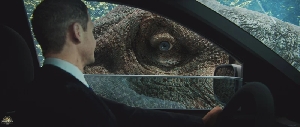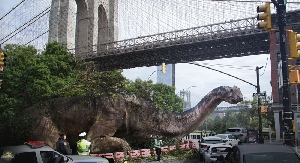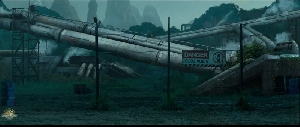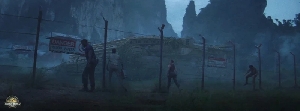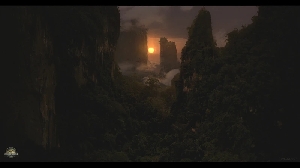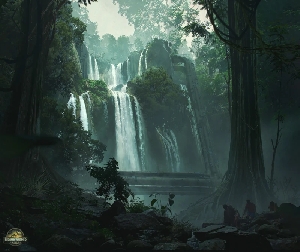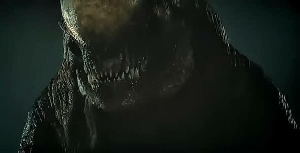Who was the Top Predator of Cretaceous North Africa?
Dinosaurs Forum Topic

Lord of the Spinosaurs
MemberCompsognathusDec 24, 20146230 Views19 RepliesAs we all know there have been many predators discovered in the “middle Cretaceous” of Northern Africa, in fact it seems we have discovered to many (Stromer’s riddle). Though which one was the top predator? Here is a list of candidates:
- Spinosaurus
- Carcharodontosaurus
- Bahariasaurus
- Sauroniops
- Sigilmassasaurus
- Deltadromeus
- Suchomimus
- Eocarcharia
Note: all of the predators above are about the length of Tyrannosaurus or longer.
We will go through each and every one of those predators and determine if they were possibly the top predator of the most dangerous environment in the history of the Earth. Lets begin.
Spinosaurus: Although it was big, I think it is safe to assume that Spinosaurus was not the top predator on the land due to its aquatic adaptations. Though in the water it may have been the top predator competing with animals like Sarcosuchus and Kronosaurus.
Carcharodontosaurus: Carcharodontosaurus was probably the largest land-adapted Theropod in Cretaceous North Africa tied with a later Theropod on this list. In terms of abilities Carcharodontosaurus was nothing out of the ordinary, basically Carcharodontosaurus is a good example for a large Theropod Dinosaur due to the fact that it is not specialized unlike Spinosaurus and Tyrannosaurus. Although it may have hunted in small gangs like its relative Giganotosaurus.
Bahariasaurus: Bahariasaurus was probably tied with Carcharodontosaurus as the largest land-adapted Theropod in Cretaceous North Africa. Personally, I believe Bahariasaurus was a basal Tyrannosaur (Tyrannosauroid). I think that Bahariasaurus was tied with Tyrannosaurus as the largest Tyrannosauroid, although I don’t expect anybody to agree with me. This would mean that Bahariasaurus had a large bite force (probably not as large as T-Rex though larger than all other African Theropods), this would also mean that Bahariasaurus was smart for a large Theropod(probably as smart as T-Rex). All of these typical Tyrannosaur adaptations would give Bahariasaurus an advantage over its main competitor Carcharodontosaurus. Though I find it unlikely that Bahariasaurus hunted in small gangs unlike Carcharodontosaurus and its South American relatives Giganotosaurus and Mapusaurus.
Sauroniops: Due to the fact that the only fossil we have of Sauroniops suggests an animal slightly smaller than Carcharodontosaurus and Bahariasaurus, I find it unlikely that it was the top predator. Though this is only one individual, so until further finds are announced I am saying that Sauroniops was not the top predator of the most dangerous place in the history of Earth.
Sigilmassasaurus: The finds we have of Sigilmassasaurus suggest an animal slightly smaller than Carcharodontosaurus and Bahariasaurus just like Sauroniops. Also, since I believe Sigilmassasaurus was a Neovenatorid this would probably make it slightly more agile than Carcharodontosaurus and Sauroniops. Though as of right now I am saying that Sigilmassasaurus is not the top predator until further finds are announced just like Sauroniops.
Deltadromeus: I find it highly unlikely that Deltadromeus was the top predator. Deltadromeus weighed about 1 ton yet in terms of volume it was the size of Tyrannosaurus Rex. This suggests an extremely lightly built Theropod, combined with its long and strong legs it probably took the role of a modern-day Cheetah.
Suchomimus: Just like its relative Spinosaurus I think it is safe to assume that Suchomimus was not the top predator due to the fact that it was adapted to a more aquatic lifestyle. Although it had strong hindlimbs (unlike Spinosaurus) and large claws which it could probably use to defend itself, its Crocodile-like snout suggests a more fishy diet.
Eocarcharia: Just like Sauroniops and Sigilmassasaurus, the finds we have suggest an animal slightly smaller than Carcharodontosaurus and Bahariasaurus. Until further finds are announced I am saying that Eocarcharia was not the top predator.
So yeah, it all comes down to Carcharodontosaurus and Bahariasaurus, and it really depends on whether or not Carcharodontosaurus hunted in gangs or not. Maybe they were like Lion and Hyena or the Asiatic Lion and the Bengal Tiger (that was until us, humans, separated those two big cats from each other).
Anyways, tell me who you think was the top predator, Carcharodontosaurus or Bahariasaurus or maybe another Theropod on the list. Thanks!
There is no such thing as a pure predator. A meat-eater is eit
Replies to Who was the Top Predator of Cretaceous North Africa?
Hey Guest, want to add your say?
Are you an avid Jurassic World fan looking for a dedicated online community of likeminded fans? Look no further! Create your own profile today and take part in our forums and gain XP points for all the content you post!





